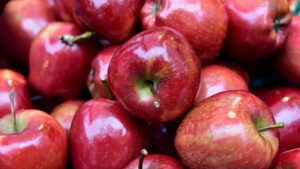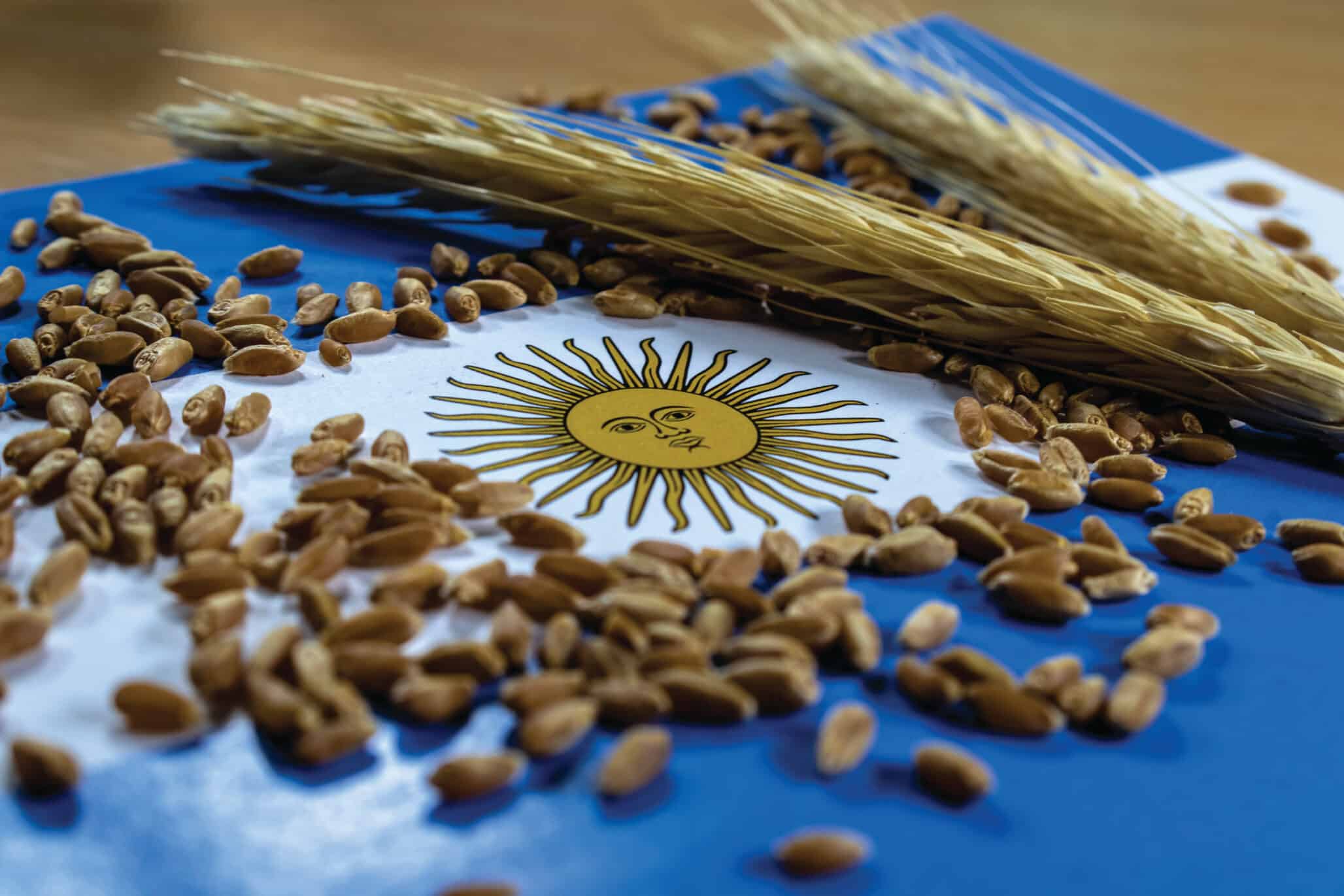Anthony Parker has been known in Canada for years as a staunch defender of Plant Breeders’ Rights (PBR), and he’s just taken his experiences and expertise in that department to the global level.
Parker, commissioner of the Plant Breeders’ Rights office at the Canadian Food Inspection Agency (CFIA), has become the first Canadian to sit on the global council of the International Union for the Protection of New Varieties of Plants (UPOV) as vice-president.
An intergovernmental organization with headquarters in Switzerland, UPOV is at the forefront of setting guidance on PBR for the world, with members from 78 countries including Canada. UPOV is a consensus-based organization. It came into existence in the 1960s, morphing into an international system for protecting new plant varieties.
All member countries have to be on board with the decision to elect its president and vice-president. It’s up to the current outgoing president to identify potential candidates who they think might serve well in the role, and then they canvass other members to see if there’s support.
Parker was approached, and quite surprised — it wasn’t something he thought very much about, he says.
“As a public servant, if others believe that you have value to offer, how can you say no to that? I was honoured and humbled to be asked.”
As vice-president, Parker will help lead UPOV decision-making and further strengthen PBR not only in Canada, but in all UPOV member countries.
Moving to UPOV 91 Parker was born in 1970 and grew up on a farm just outside Ottawa. He originally trained to be a plant breeder, but found himself working in the regulatory sphere after he was hired by the Canadian Food Inspection Agency (CFIA).
“I was very fortunate at the time to have two mentors at Agriculture and Agri-Food Canada, who sort of saw potential in me that perhaps I didn’t see myself. I expressed an interest in plant breeding, and they encouraged me to go off and do my graduate studies. I still was able to keep a job with them, and eventually, they nudged me to leave the nest and I moved over to CFIA.
Then a challenge came forth to me to work with the sector to move Canada up to UPOV 91.”
For decades, Canada was not a UPOV member at all; it finally got there in 1991 with a weaker form of intellectual property (IP) protection when it signed onto the UPOV 1978 convention. It took 26 years for Canada to move up to the UPOV 1991 convention, the most current version.
“In those days it was beginning to be understood that you need to incentivize breeding and new plant varieties to further agricultural productivity. It takes anywhere from a few years to almost 20 years to develop a new plant variety, and that’s all front-end investment. Once that breeder comes to the marketplace with something, they have to have certain assurances of protection, to know their innovation isn’t going to be stolen by others,” Parker says.
“UPOV itself has played a critical role in increasing agricultural productivity, food security, and now moving into the future it must ensure that breeders are incentivized to deal with sustainable agriculture and climate change adaptation. It’s never been more relevant.”
Back in the 1960s and right through almost to the late 1980s, UPOV membership was small; only around 20 countries were members in the early days. In the early 1990s, as IP protection became more relevant to trade agreements, more countries joined in.
“At that time, IP didn’t have the profile it has today. It took almost a decade and three attempts in our Parliament just to implement a law and sign onto UPOV 78. IP is always controversial,” Parker says.

Need for Leadership
According to CropLife International, IP rights are essential to enable innovation by providing innovators the ability to recoup investments and fund new R&D; in fact, the absence of IP rights would have a considerable cost for society since the key innovation incentive would be eliminated and thus the chance of new innovations being made, and the resulting economic benefits, would be significantly reduced.
According to International Seed Federation (ISF) Secretary-General Michael Keller, having someone like Parker as UPOV council vice-president is crucial to getting people around the table to raise the profile of the importance of IP around the globe.
“Anthony has the leadership we need in these times where you have so many question marks. You need a protector, you need leadership, you need someone who has a vision. He has the commitment to get a diverse range of stakeholders on the same page,” Keller says.
ISF believes strong and effective intellectual property protection encourages further breeding and research required to meet increasing food, feed, fibre and fuel needs whilst preserving the planet, according to ISF’s official View on Intellectual Property document.
For Keller, Canada is a great example of an ISF member that has strengthened its IP framework over time and is in a position to help other countries do the same.
“The progress Canada made moving up to UPOV 91 is impressive. It’s led to increased innovation, and that means increased investment in diverse crops like hemp and pulses. That means companies came back to Canada and increased investment,” Keller adds.
“We’re happy to see someone like Anthony so involved in the IP sphere who has this national experience with the importance of the UPOV 91 convention and knows the importance of having a strict but also fair and balanced plant variety protection framework.”
As far as developed nations go, Canada is one of the last to join UPOV 91, Parker notes.

“As soon as we did that, we went to our Plant Breeders’ Rights Advisory Committee, and they really pressed us to share our experiences with others. Canada’s participation in UPOV has rewarded our public and private sectors, and the committee pressed us at the CFIA to do more, to start giving back to UPOV.”
For Parker, his appointment to the global UPOV council as vice-president is a culmination of Canada having finally adopted UPOV 91.
“It wasn’t just the seed industry that made that happen; it was Canadian agriculture as a whole. It’s remarkable what you can achieve when the seed industry and the entire ag community get behind something.”
Balanced Viewpoints
In these times of climate change, increased investment in plant breeding is needed, Keller says. It’s key to have leaders who understand how to balance the many voices in the discussion.
“There are new tools available with genome editing, which the seed sector will use to tackle the issues we are facing. Having said this, we have to find the right balance because we should never forget that genome editing will never replace the whole breeding process,” Keller says.
In any case, organizations in UPOV member countries are not obliged to follow guidelines or explanatory notes from UPOV, but the organization provides crucial guidance and confidence to investors that a member country is a friendly place to do business and takes PBR seriously.
Edgar Krieger is secretary-general for the International Community of

Breeders of Asexually Reproduced Horticultural Plants (CIOPORA) based in Switzerland. The association brings together plant breeders, breeder associations, IP experts and consultants whose joint efforts are aimed at the development, improvement, and harmonization of Plant Variety Protection (PVP) systems worldwide.
Vegetatively propagated crops are in the direst need of strong PBR protection, Krieger notes, because it is so easy to propagate them.
“The UPOV Plant Breeders Rights system is the tailormade protection for plant varieties and has support of the breeders. But like any policy area, there are challenges in the world of global IP,” he says.
In Krieger’s view, Parker’s appointment comes at a time when the discussions in UPOV are tough, as they circle around the cornerstones of this system — what is propagating material, how does the protection of harvested material work, and what constitutes an Essentially Derived Variety (EDV).
“I’ve known Anthony for over 10 years, and he is definitely the right choice for this important post in UPOV; he has the leadership to move the discussions in the right direction,” Krieger says.
Krieger points to the discussion on EDVs as just one area where Parker is a staunch defender of plant breeders.
The concept of EDVs is a controversial one, and some want to limit the EDV concept to varieties which can be distinguishable from the initial variety by a very limited number of characteristics only. All leading breeders’ associations and most UPOV members say this interpretation limits the EDV concept and does not achieve UPOV’s objective to create a balance between biotechnology inventors and traditional breeders and to bring mutations under the scope of protection of their initial variety.
“Anthony understands we need to broaden the EDV concept so that breeders are compensated when someone builds off of their variety,” Krieger says.
Of course, nothing is ever black-and-white, and Parker acknowledges there are legitimate arguments against broadening the EDV concept.
“The EDV concept was intended to strike a balance somewhere in between protecting the legitimate rights of the breeder who came up with the first variety, but also other side of the equation, ensuring that people can access other people’s germplasm freely for breeding purposes,” Parker says.
“Some don’t want this stronger interpretation of the EDV concept, concerned that it may have a chilling effect on the use of new breeding techniques. They’re saying, ‚ÄòLook, this is a powerful new tool, we want it to be used often and we’re worried that if you set the threshold too high for EDVs, it’s not going to get utilized. There’s a lot of important points to take into consideration in this discussion. One always needs to appreciate and understand different perspectives on any issue. Ultimately, we need IP rights to be strong and effective, but also fair and balanced.”













